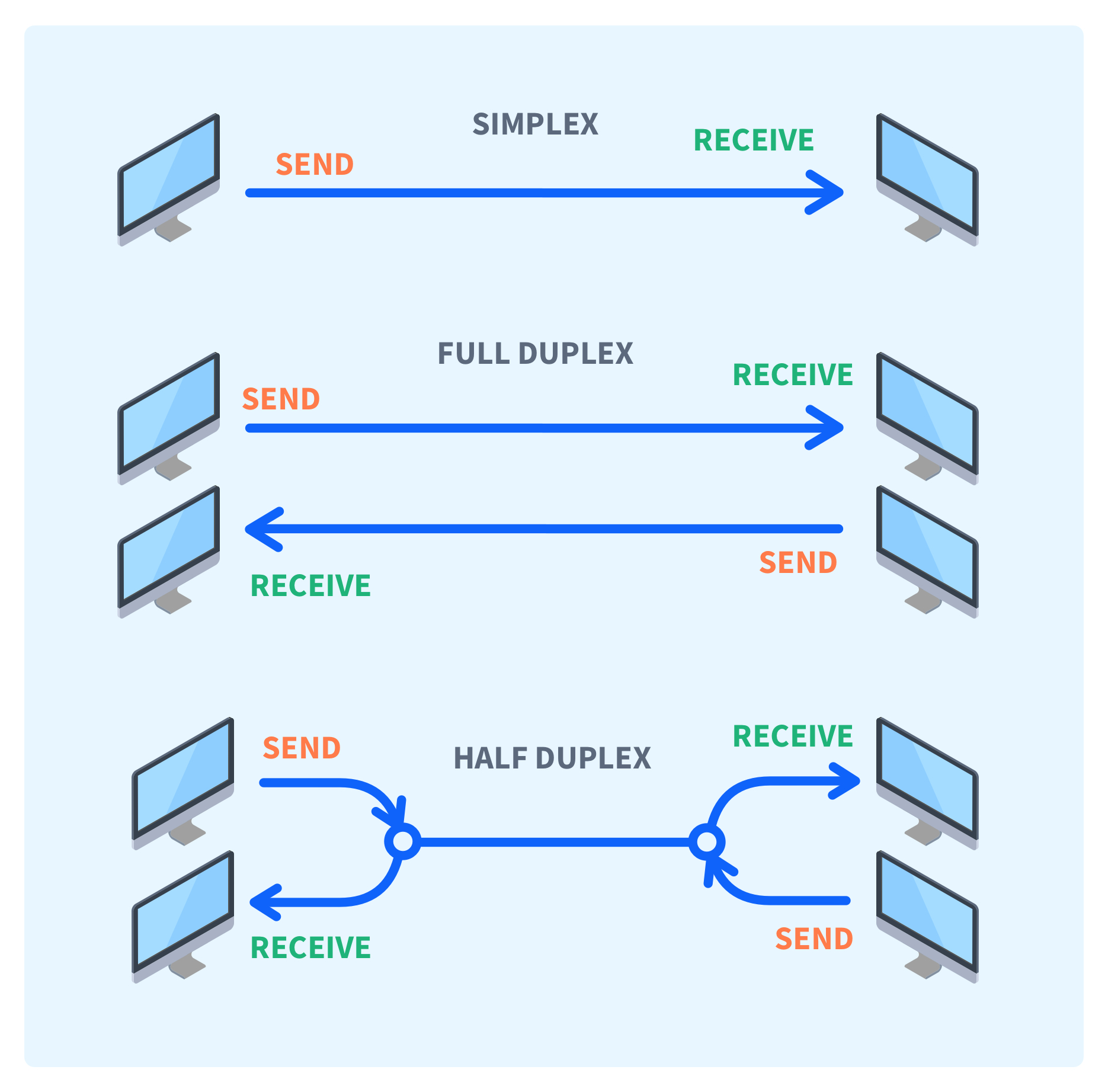Simplex vs Duplex Fiber: What are the Differences?

Quick Definition: Simplex fiber is fiber optics that transmits data only one way. Duplex fiber optics has two strands of fiber and transmits data both ways.
In the ever-evolving world of IT, fiber optics cables have been a mainstay for reliable and lightning-quick data transmission. Fiber infrastructure comes in two flavors: simplex and duplex. Both need to be understood to pass the Network+ exam, which is why we're thoroughly reviewing each of their attributes and unique applications. So, without further ado, let’s define simplex fiber optics.
What is Simplex Fiber?
Simplex fiber is a form of fiber optics that transmits data unidirectionally. It is ideal for situations where data needs to be sent in one direction and does not need data sent back for any purpose.

What are Some Applications of Simplex Fiber?
There are numerous use cases for simplex fiber, spanning from television and broadcast to high-tech medical equipment. Simplex fiber optics is often used for TV broadcasting to transmit data from a camera to a central broadcasting unit. In medicine, simplex fiber is used in complex tasks such as endoscopy and X-ray imaging. Simplex fiber is even used in the realm of security, where CCTV and other surveillance equipment need to transmit A/V data quickly and reliably.
As you may have noticed, each of these use cases revolves around the transmission of critical data unidirectionally. Simple fiber optics is perfect for situations where data must be sent quickly and reliably — and in only one direction.
What are the Disadvantages of Simplex Fiber?
The most glaring disadvantage to simplex fiber is that it only goes in one direction. Ultimately, this limits its usefulness in two-way communication and is only valuable at sending data to a processing unit.
Additionally, simplex fiber requires careful alignment to ensure data is transmitted properly. Any misalignment can cause communication disruption or incomplete data transmission.
Lastly, while simplex fiber is invaluable for many security applications, it is unsuitable for biometrics. Face or fingerprint scans generally need bi-directional data transmission to work effectively. (For example, to send a fingerprint and then verify it is correct.)
Despite these limitations, simplex fiber is still an excellent solution when data only needs to travel one way reliably, consistently, and at far distances.
What is Duplex Fiber?
Duplex fiber is a fiber optic technology that allows data to be transmitted in two directions. Duplex fiber uses two fiber strands within a single cable to enable bidirectional communication. One strand functions as the "receiving" strand, while the other operates as the "transmitting" strand. The receiving strand incorporates a diode that converts light data into electrical data, and conversely, the transmitting strand performs the opposite conversion process.
What are Some Applications of Duplex Fiber?
Duplex fiber is what most people think of when they envision fiber optics. Its application is nearly limitless but is most apparent in IT communication. Duplex fiber is used deep under the ocean as the backbone of the internet. Duplex fiber connects Europe to America, Africa to Asia, and almost every other continental combination.
Duplex fiber is also utilized in LANs and WANs for higher data rate applications. Routers, switches, and gateways can all leverage fiber optics to turbocharge a network and reduce load times to mere seconds compared to Ethernet.
Duplex fiber is also an excellent choice for all things VoIP-related. VoIP — especially with video integration — takes a sizable amount of bandwidth. It also necessitates clear and reliable communication. Duplex fiber is an excellent candidate to ensure VoIP calls faithfully transmit data with high precision and minimal lag.
What are Some Disadvantages of Duplex Fiber?
While duplex fiber is a critical component of the internet, it does have some disadvantages. If a duplex fiber is not adequately shielded or separated, it can result in cross-talk. Cross-talk is when one signal unintentionally interferes with another, causing signal degradation.
It is also no secret that duplex fiber can be expensive to implement. The additional strand adds a layer of complexity in terms of proper optical alignment and installation. These costs must be considered if you opt for a fiber optic LAN instead of an Ethernet one. One possibility is to use fiber optic cabling as the backbone of your LAN, and use ethernet to connect nodes.
Final Thoughts
While simplex and duplex fiber may seem similar, they are different and have distinctly different usages. Simplex fiber is used on equipment that requires data to be sent only one way, like an X-ray imaging system. Duplex fiber, on the other hand, is far more useful for two-way data transmissions. LANs, WANs, and even deepsea backbones leverage duplex fiber optics for fast and reliable communication.
The Network+ exam will test your knowledge of both of these subjects. A good way to remember the difference is that simplex is “simpler” because it only goes one way. For duplex, think about a duplex house — two units in one home, thus two-way communication. Fiber optics is a critical component of most–if not all–network topologies, and hopefully, you’re armed with a little more knowledge before tackling your next networking project.
Not a CBT Nuggets subscriber? Sign up for a 7-day free trial.
delivered to your inbox.
By submitting this form you agree to receive marketing emails from CBT Nuggets and that you have read, understood and are able to consent to our privacy policy.